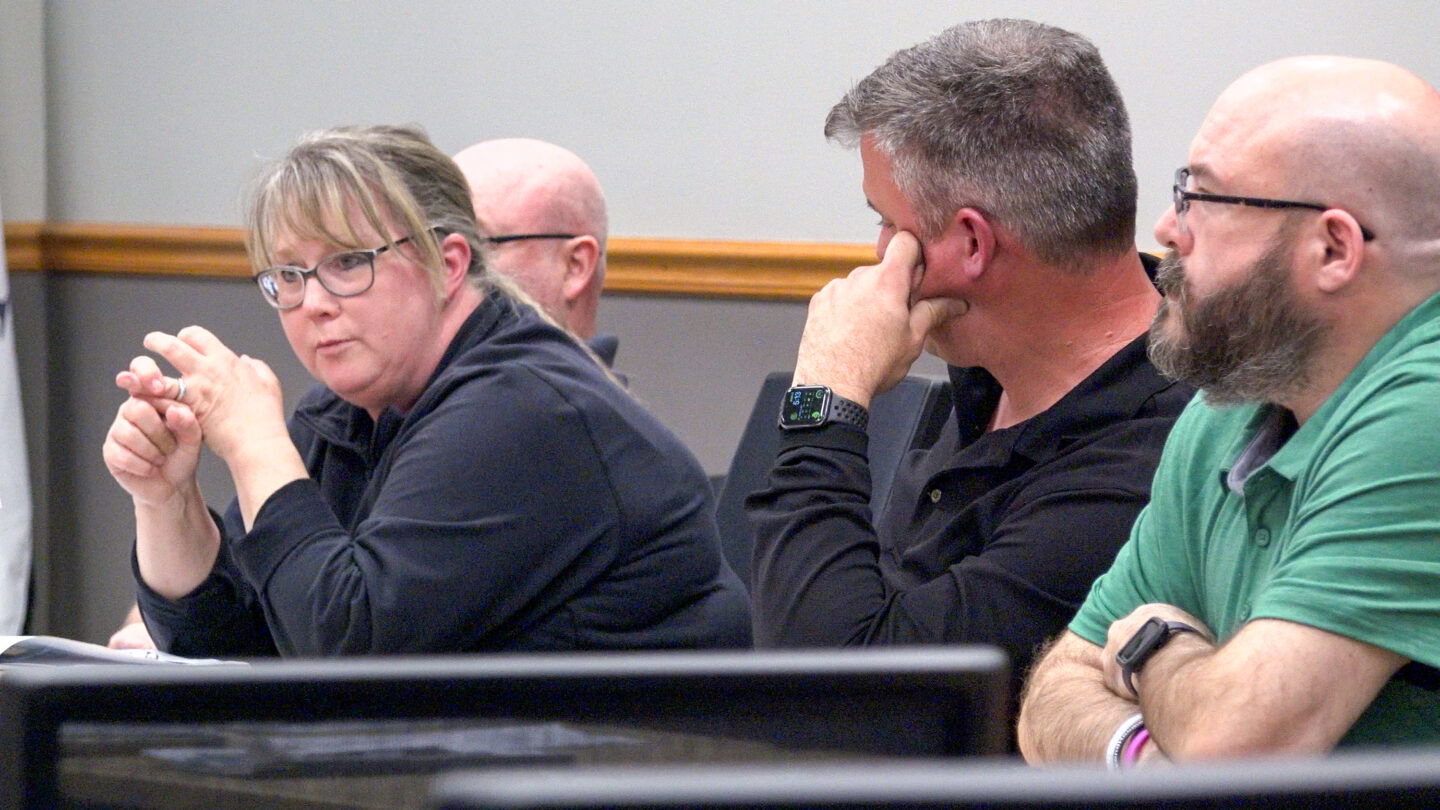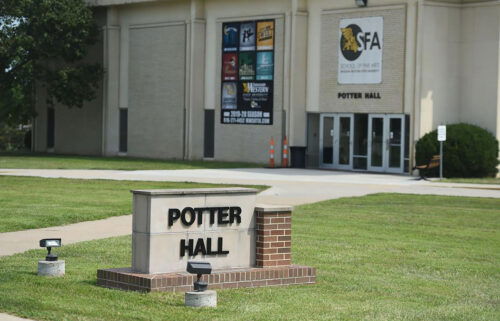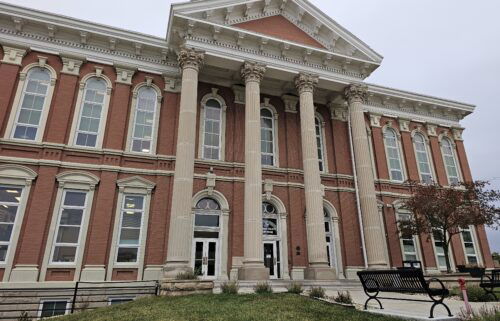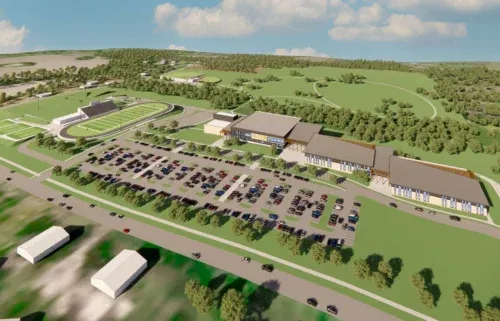Panel takes second look at two-school plan

By Marcus Clem
A Monday meeting saw St. Joseph’s chief of public schools seeking, as he put it, to calm tensions and explain why he believes a two-high-school plan is the best.
Superintendent Gabe Edgar addressed the district’s committee on facilities that he emcees each month. He explained how he currently intends to ask for voters to approve an $80 million bond to construct one high school, and then do it again at a future date after that.
Board of Education member Rick Gehring, who serves as the co-chairman of the committee with David Foster, endorsed the concept of adopting a plan now and letting it develop further over time. The district budgets nearly 25% of every dollar it has available toward things other than paying staff and managing its debt, a cost that rises as buildings continue to age. Enrollment, a source of revenue based on per-student payments, has fallen to less than 10,500, down from more than 11,500 in 2014.
“We are losing families, we are losing students,” Gehring said. “And whether or not we want to admit it, when people come to St. Joseph, they ask two questions: ‘What’s your district look like, and what’s your crime like?’ So, curb appeal is important … And we are throwing so much money into these things and getting nowhere.”
Each high school’s total cost will exceed $80 million, with each project running at up to $120 million when all is said and done. The majority of the expenses could be covered by borrowing money without raising taxes, if the district’s bonding capacity is appropriately managed.
“I really do believe the two-high-school plan is the best plan we can come up with,” Edgar said in comments to the committee.
Where the difference between $80 million and up to $120 million comes from is not yet clear. Edgar said presenting that information in detail risked presenting “more questions than answers” at this time, but he promised to have future updates. Minuscule savings would be realized by consolidating the staffing needs of three schools into two. This plan would ultimately see Central, Benton and Lafayette high schools changed away from their current function — closure is possible, as is using those buildings for something else.
“Classroom sizes won’t get bigger, at all,” Edgar said. “Let’s say there’s a class at Benton right now with seven students in anatomy, and a class at Lafayette now with seven in anatomy. You go to the two-school plan, and now you have 14 in one class. You now need one less anatomy teacher. There could potentially be some savings. It won’t be a world beater.”
Edgar emphasized that he will take direction from the community and the board of education on what is ultimately done. Time is of the essence in implementing some kind of plan, he said.
“I just want what’s better for kids. Something has to happen, period,” he said. “What that something is, we just need to know what that something administratively is. We can’t continue to just talk about it. I can offer education to kids in five high schools. It doesn’t matter to me. Whatever needs to happen, needs to happen.”
Board member Whitney Lanning echoed the call for prompt action. If the three-high-school structure is maintained, she said, then the popular open-enrollment system at the high school level will have to end, in place of a closed boundary system. That would certainly have effects; one contributor on Monday said one student in her household attends Central, one attends Lafayette and another attends St. James Catholic School.
“We’re either going to have to go to two schools — and I don’t love that plan, it’s very expensive, and it’s going to take a decade — or we can close boundaries,” Lanning said. “The school board has to decide what we’re doing, and commit to that, hell or high water. It can’t be forced down the community’s throat, but we must make a decision.”



